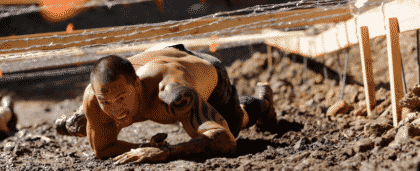The History of Dentistry
Most of us know how painful a toothache can be. The pain is indescribable. It can prevent us from sleeping, from eating, and in some cases it can keep us from talking. So imagine you’re living back in the stone age, bronze age or even early iron age and your mouth hurts, what do you do? It is believed early dentistry arose out of necessity, as a way to alleviate the torment of oral pain. There is evidence found in almost all ancient civilizations proving even those cultures considered more primitive than ours used tools and implemented techniques to improve oral health.

Where did dentistry start?
The first evidence of ancient civilizations using some form of dentistry in treating oral health concerns dates back as far as 7000 BC. The Indus Valley Civilization was a Bronze Age civilization found in the northwestern region of the Indian Subcontinent (consisting of what is now Pakistan, India, Afghanistan and Iran). This area is the sight of some of the oldest evidence of man’s attempts to alleviate tooth pain. Fast forward a few thousand years and we find that the Sumerians thought worms were boring holes in peoples teeth in an effort to hide. This idea lasted up to the 1700’s, when it was finally proven false. It has even been reported that many ancient doctors mistook the nerves inside the teeth as the boring worms.
In 3000 BC, Ancient Egyptian Hesi-Re was the first named dentist- his tomb inscription claimed him to be the “greatest of teeth”. Ancient Greek scholars Hippocrates and Aristotle wrote extensively on dentistry, including eruption patterns of teeth, treatments of decayed teeth and gum disease, tooth extractions using forceps and using wires to stabilize loose teeth and fractured jaws. The Tang Dynasty is one of the first recorded civilizations to have used a sort of amalgam filling for tooth decay. Pierre Fauchard, a 17th century French physician, can be thanked for the modern science of dentistry and has been dubbed the father of dentistry.

How has dentistry been implemented throughout history?
Evidence shows that the Indus Valley people used bow drills (typically used for woodworking and bead making) to take out “the rot” from a tooth, though whatever they may have used to reseal the tooth is no longer evident in the recovered artifacts. Ancient Egyptian mummies have been found with evidence of the cultures dental surgery habits. It seems they, much like the Mayan and Aztec cultures, used small smoothed rocks and carved shells as implants for missing teeth. The Egyptians also bound replacement teeth using gold wires, the early attempts of dental prosthesis.

The earliest fillings in dentistry were made of beeswax, metal wasn’t used until the Tang Dynasty, 700 AD. And the Aztecs were found to have used iron shavings, water and navel lint (baked of course) as fillings. In the middle ages, most toothaches and mouth pains were relieved by extracting the problem causing tooth. Oddly enough, however, dentistry didn’t exist as a profession and most doctors could hardly be bothered with such trivial concerns, so barbers were the ones doing the extractions.
In the 14th century, Guy de Chauliac, a French physician, invented the dental pelican (the predecessor to modern forceps). Among many of Fauchard’s developments were the extensive use of dental prosthesis, the introduction of dental fillings to treat dental decay, and the idea that sugar derivative acids are responsible for tooth decay.

Some dentistry facts- interesting, fun and a little bizarre:
- The first dental school was founded in 1840, the Baltimore College of Dental Surgery. The American Dental Association was started shortly after.
- In 1873, Colgate mass-produced the first toothpaste in a jar, and just a few years later, in 1885 the first toothbrush was mass produced in America by H.N. Wadsworth. The first real electric toothbrush was produced in 1939, but it was developed in Switzerland.
- Most Americans did not pick up on the dental trend to brush their teeth until after World War II. The soldiers stationed abroad brought the concept of good dental health back to the states.
- In the old days when dentures weren’t invented yet, dentists would do a quick surgery in implanting teeth in the mouth of a person. The teeth came from dead people.
- William F. Semple, a dentist from Mount Vernon, OH., was issued the first patent in 1869 for chewing gum.
- Paul Revere was not only known for warning that the British were coming, but he also trained as a dentist under America’s first dentist, John Baker.
- Dental researchers have been surprised to find that there are grooves in the teeth of prehistoric humans that seem to be similar to those caused by current day dental floss and toothpicks.
- The electric chair was invented by a dentist, Alfred Southwick, in 1881. He came up with the idea after hearing of how a man died painlessly and quickly from touching exposed power lines.
- It is said that the ancient Chinese were the first to use toothbrushes. They made them from pigs’ necks or used pieces of wood to create “Chew Sticks”.
- Invisalign braces were first made public in May of 2000, but centuries before, orthodontics were being perfected. Edward H. Angle created a simple classification for crooked teeth in the late 1800s, and that system is still used today. He also started the first school of orthodontics in 1901.
- Novocain was originally invented around 1905 to be a quick acting anesthesia to use on soldiers during war time. It never quite caught on in that respect, but it was picked up for dental use.
- Contrary to popular belief, George Washington’s teeth were not actually made from wood. Researchers in Baltimore found that his false teeth included gold, ivory, human, and animal teeth.

It’s clear dentistry has been a major part of human civilization over the centuries. Though so much has changed- the development of specialized tools and the recognition of the human anatomy and physiology, the continual need for oral health care will keep the dentistry profession growing and maturing for ages to come. Just think of what the future of dentistry will bring!


